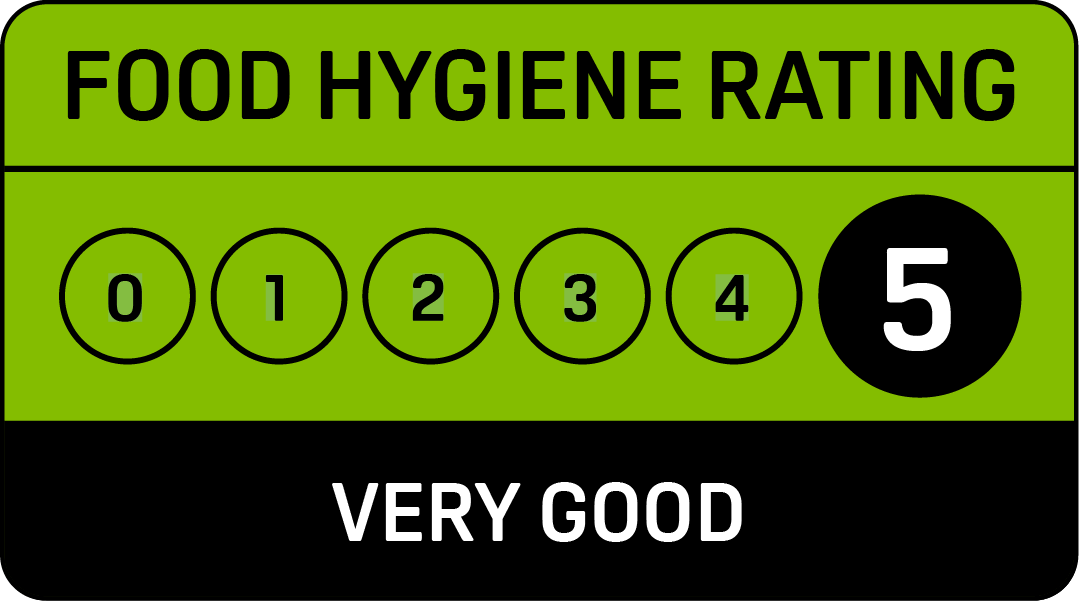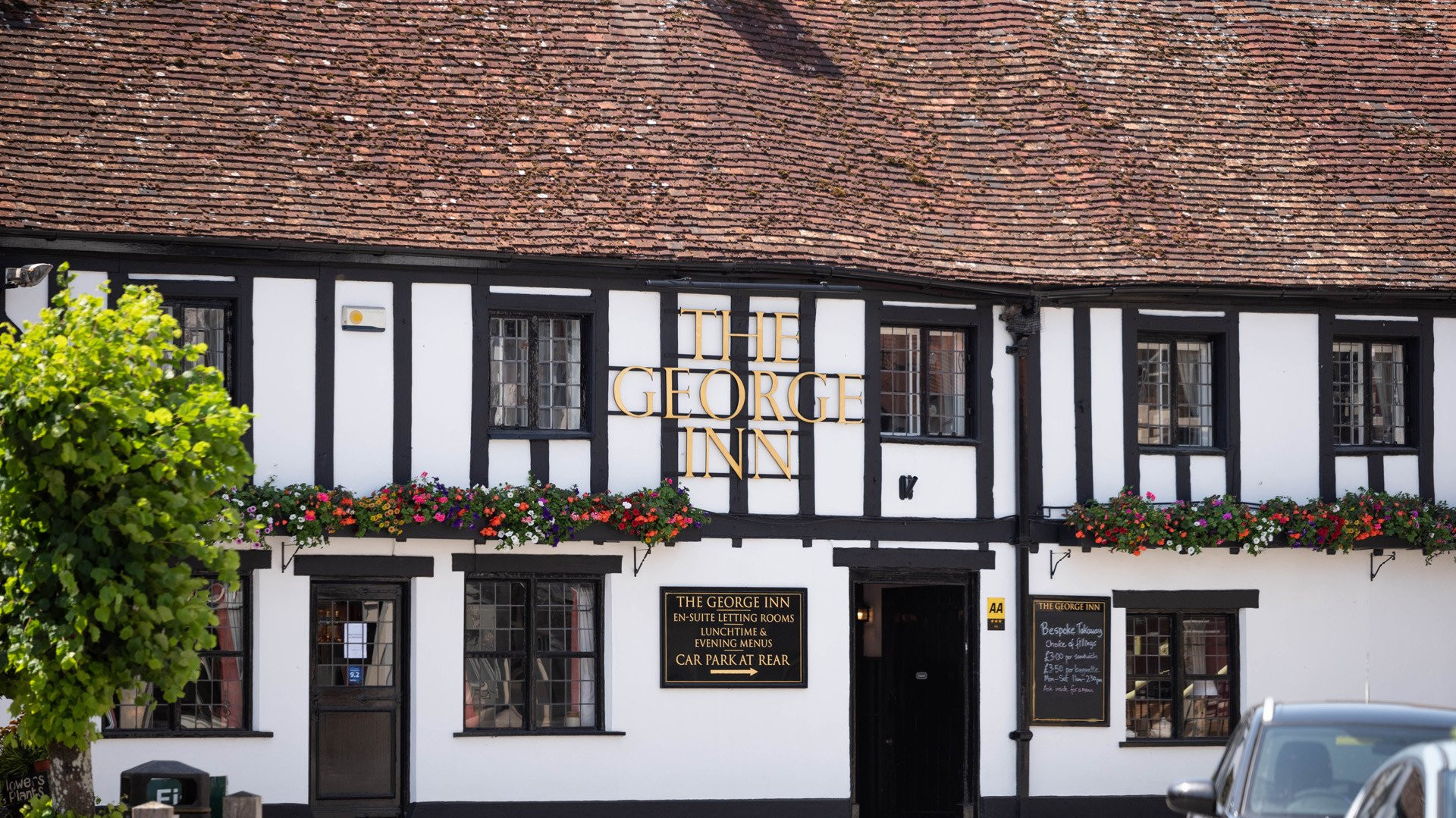


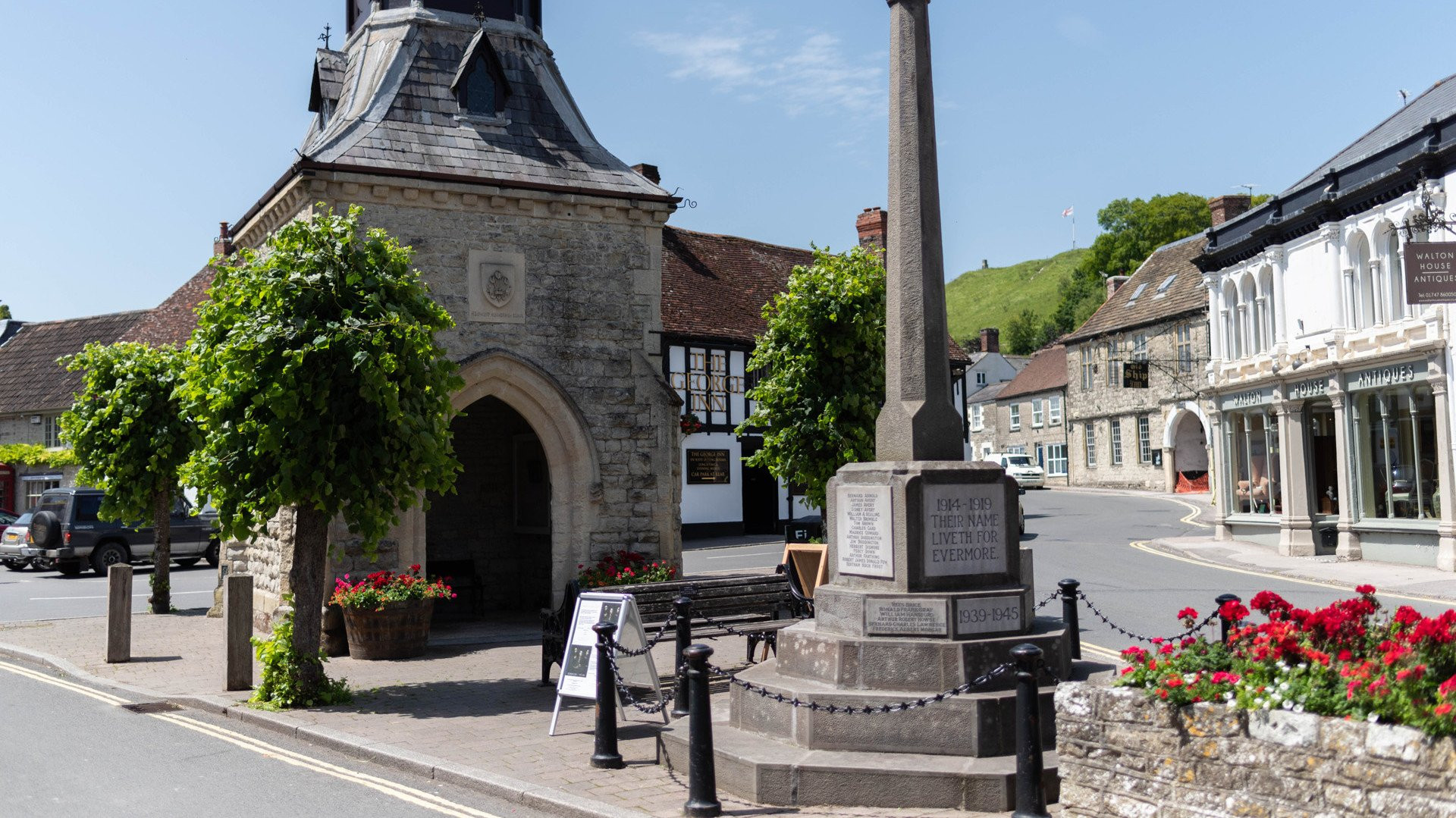
More about The George Inn
Find out more about our 16th Coaching Inn
Situated in the idyllic market town centre of Mere, The George Inn is a charming and traditional coaching inn brimming with character and history. From renovated buildings to royal visits, our delightful coaching inn has many wonderful stories to tell.
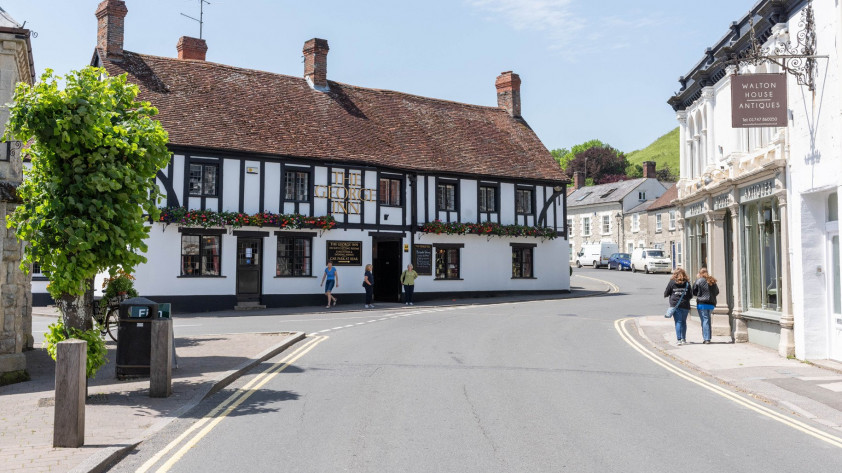
The oldest pub in Mere
According to local records, the original inn dates back to c.1580. Known to be the oldest pub in Mere, the building itself is stone built and has a facing to give it the appearance of being timber-framed. The present facade dates from c.1920 and the inn is believed to have been further modified in both the 19th and 20th centuries.
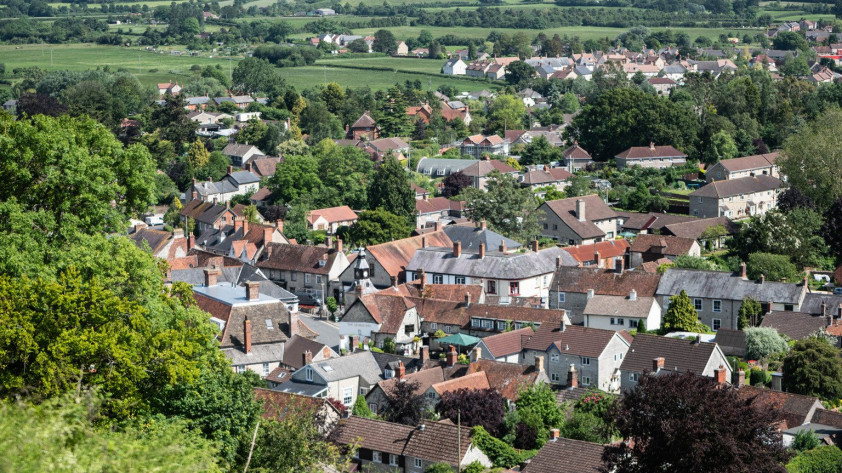
Once owned by the Chafyn Grove family
Originally known as the George, in 1861 the inn and surrounding property was leased to and later sold to the Chafyn Grove family of Zeals House. In the latter 18th or early 19th century the inn was renamed the Talbot, taken from the coat of arms of the Chafyn Grove family, depicting an early breed of black Talbot dog, an ancestor of modern foxhounds. It later reverted back to The George Inn, as it proudly remains today.
Independent family brewers, Hall and Woodhouse, purchased the property in 1930. It remains part of the Hall and Woodhouse family today, independently run by experienced Business Partners Paul & Anna.
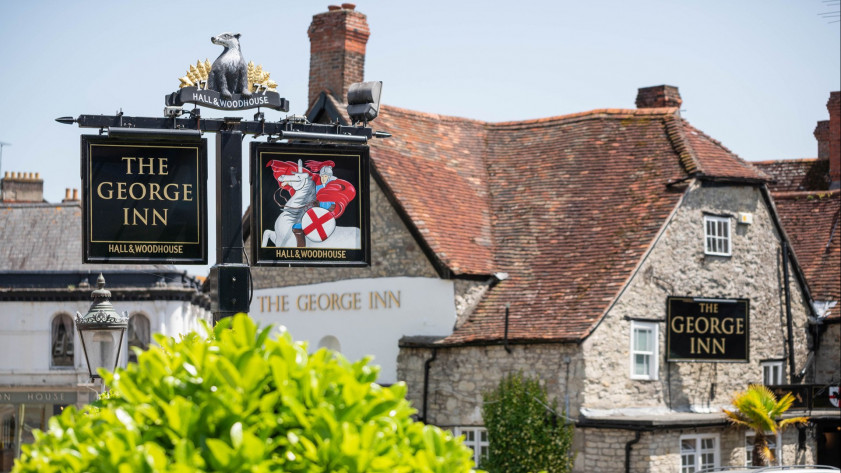
Fit for a royal
According to local records, King Charles II dined here on October 6th 1651 on his way from Trent to Heale House whilst fleeing after his defeat at the Battle of Worcester. The Battle of Worcester took place on 3rd September 1651 at Worcester, England, and was the final battle of the English Civil War. Oliver Cromwell's Parliamentarian New Model Army, 28,000 strong, defeated King Charles II's 16,000 Royalists, of whom the vast majority were Scottish.
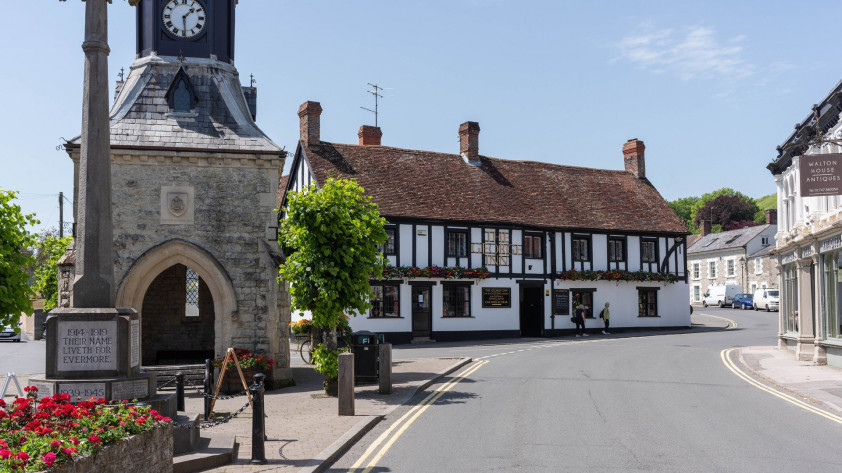
Keeping Track of Time
The George Inn sits in the heart of the market square in Mere. Nowadays you will find the Clock Tower standing proudly in the squares centre opposite the pub. The Clock Tower was built in 1868 to mark the positioning of the original Mere Market House, a two storey building with a covered open ground floor for perishable market goods.
The Mere market ended in the 18th century but the upper floor, the ‘Croos Loft’, continued to be used as a school and it was here that the poet William Barnes had his first school in Mere. The market house was pulled down in 1863 and was replaced by the present Clock Tower which was opened by the Prince of Wales (later Edward VII) in 1868.
